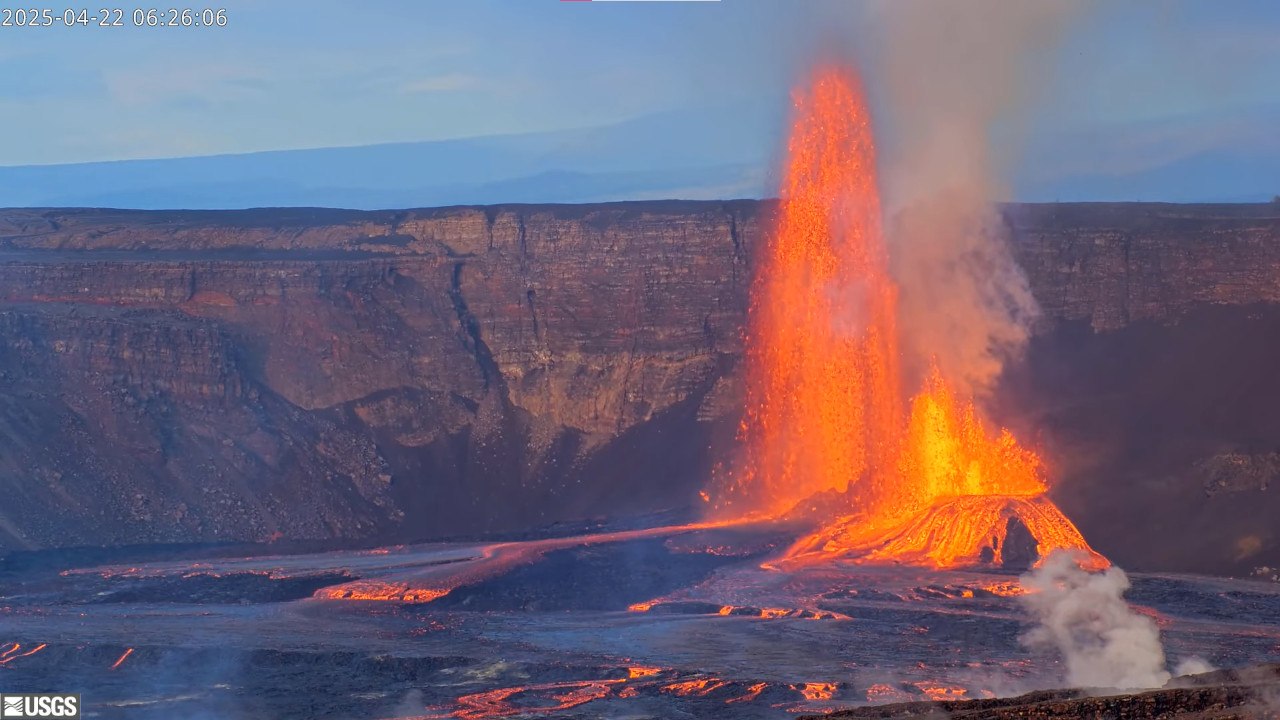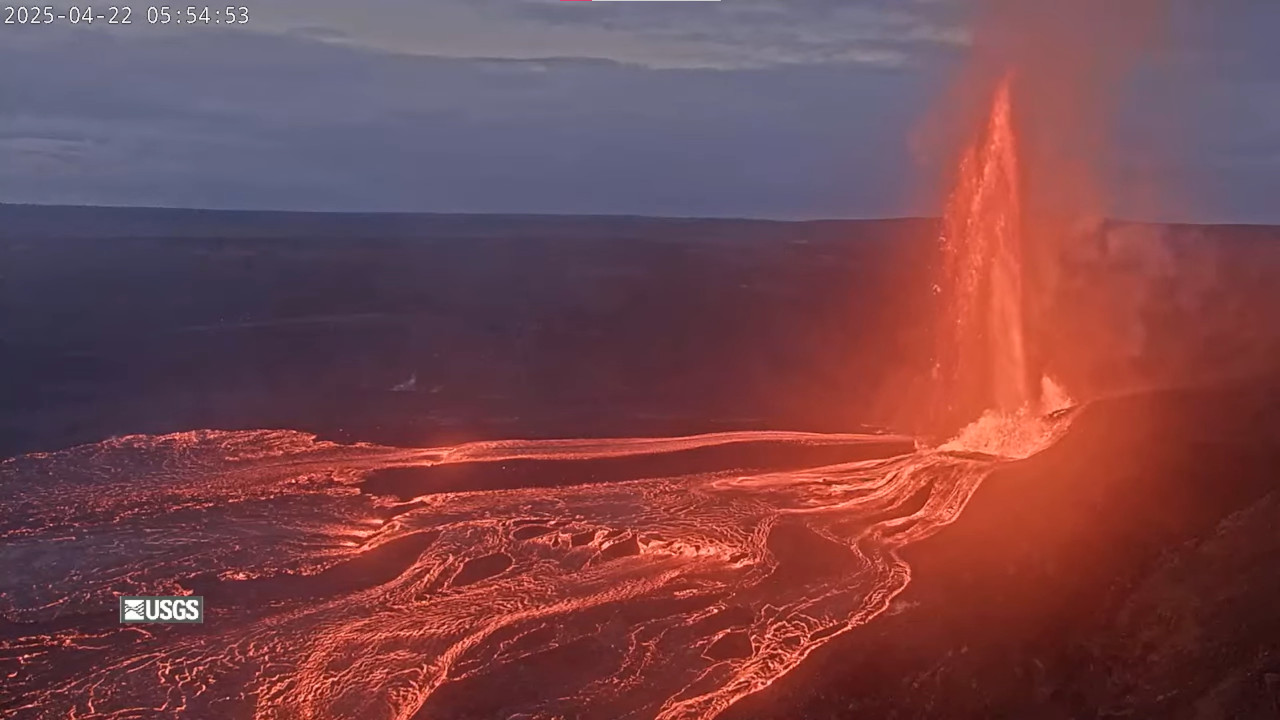High Lava Fountains Return To Kīlauea Volcano, Alert Message Issued (A synthesized voice was utilized in the narration for this story)
(BIVN) – High lava fountains began at the summit of Kīlauea on Tuesday, after a long, quiet start to Episode 18 in the ongoing eruption within Hawaiʻi Volcanoes National Park.
As of 4:37 a.m. HST, the USGS Hawaiian Volcano Observatory reported fountains from the south vent had reached over 600 feet high, with fountains from the north vent reaching 200 feet. The plume of volcanic gas was going straight up due to calm winds.
“Expect the possible fall of Pele’s hair and ash north to overlooks and communities”, the USGS stated.
From a USGS HVO update posted at 4:36 a.m. HST on Tuesday morning:
Episode 18 of the ongoing Halemaʻumaʻu eruption resumed with lava overflowing the south vent at 3:20 a.m. HST on April 22 followed by the onset of fountaining from both vents at 3:30 a.m. HST. Lava began overflowing the north vent at 3:47 a.m. HST. Fountains are currently over 650 feet (200 meters) high at the south vent and over 160 feet (50 meters) at the north vent. Both fountains are feeding a vigorous flow on the floor of Halemaʻumaʻu crater. Lava has currently covered about over 20% of the floor of Halemaʻumaʻu crater. Strong deflation accompanied the onset of lava flows at 3:20 a.m. and tremor increased with the onset of fountaining from both vents.
Prior to the onset of high fountaining, intermittent spattering began at the north vent around 1:30 a.m. HST and increased in frequency until 3:20 a.m. HST when lava began erupting. Additional information on the resumption of episode 18 can be found in the April 20 Kīlauea update and the April 21 Kīlauea update.
Kīlauea’s current eruption in Halemaʻumaʻu crater within Kaluapele (the summit caldera) began on December 23, 2024. There have now been 18 episodes separated by pauses in activity. All eruptive activity remains within Hawaiʻi Volcanoes National Park. No significant activity has been noted along Kīlauea’s East Rift Zone or Southwest Rift Zone. Current hazards include volcanic gas emissions and windblown volcanic glass (Pele’s hair) and tephra that have impacted Hawaiʻi Volcanoes National Park and nearby communities.
Volcanic gas emissions remain elevated and at heightened levels due to lava fountaining. The last sulfur dioxide (SO2) emission rate measured on April 10 was approximately 1,200 tonnes per day. Typical levels of Sulfur dioxide (SO2) emission have been about 1,000 tonnes per day during previous pauses. Sulfur dioxide (SO2) emission rates during earlier high fountaining episodes have reached 50,000 tonnes per day. This morning, the winds are slack and Pele’s hair could fall throughout Hawaiʻi Volcanoes National Park and surrounding communities.
Strands of volcanic glass known as Pele’s hair can be produced by fountains and fall on the summit area of Hawaiʻi Volcanoes National Park and surrounding communities. Current wind directions are likely to carry most of the Peleʻs hair away from established viewing areas and communities.



by Big Island Video News6:43 am
on at
STORY SUMMARY
HAWAIʻI VOLCANOES NATIONAL PARK - Lava fountains were over 600 feet high before sunrise at Halemaʻumaʻu.